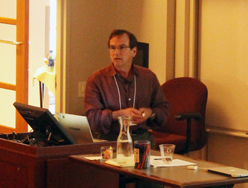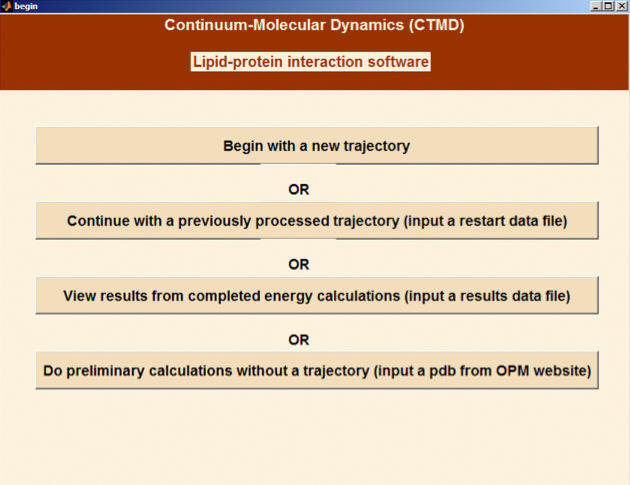
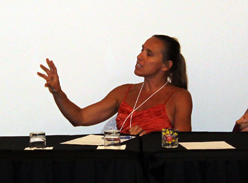
Dorothee Kern, Brandeis University and External Advisory Committee Member
On May 3rd and 4th, the Membrane Protein Structural Dynamics Consortium (MPSDC) held its first Frontiers in Membrane Protein Structural Dynamics conference. The conference consisted of scientific sessions and poster presentations, and featured both Consortium members and external invitees. Attendance was open to the public took place within the context of our 3rd Annual MPSDC Meeting, where all members, NIH representatives and our External Advisory Committee participated. Prior to the conference, the MPSDC’s Computational Modeling Core hosted a NAMD/VMD workshop and a mini-symposium concerning the latest advances in membrane protein modeling.
Both the conference and CMC events were very well attended and enabled extensive conversations surrounding the topic of cutting edge advances and scientific methods in the field of membrane protein dynamics, as well as ways to resolve current roadblocks. The conference was able to hit a high note in bringing together the issues and ideas most relevant to the key goals of the consortium both in the present and in the future. Chris Ahern of the University of British Columbia and MPSDC Associate Member noted afterwards that it was probably one of the best meetings he’s been to, “primarily because of the quality of the science that’s being done, as well as the excitement and eagerness of people to cooperate.”
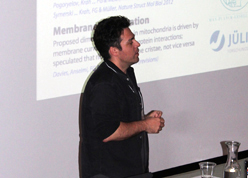
José Faraldo-Gómez, Max Planck Institute for Biophysics and MPSDC Associate Member
In the afternoon, two discussion panels were held, which themselves are in the spirit of much of the broader conversations that took place at the conference as a whole. The first panel, “Finding a common language: linking experiment and computation” was chaired by Hassane Mchaourab, and included Benoît Roux, Martin Zanni, Ivet Bahar, Dorothee Kern, and Emad Tajkhorshid as participants.
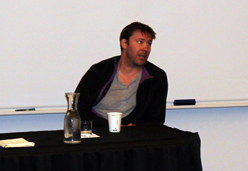
Chris Ahern, University of British Columbia and MPSDC Associate Member
The second panel was titled “Breaking the barriers of membrane protein expression and labeling” and was moderated by Robert Nakamoto. The panel included Chris Ahern, Jim Bowie, Volker Dötsch and Shohei Koide. Discussion focused on three topics: the optimal nitroxide spin probe for monitoring protein dynamics and DEER distance measurements, how to incorporate such a probe into the protein targets, and cell free synthesis of target proteins. The optimal nitroxide spin probe would be connected to the backbone by only a β carbon. Such a label can be introduced using chemical synthesis, but because most of our proteins are too large, methods for bio-incorporation of unnatural amino acid are preferred. Cell free biosynthesis systems such as those developed in the laboratory of Volker Dötsch, Goethe University, and Chris Ahern, University of British Columbia, may provide the best approaches. The Protein Core labs will explore methods for charging the non-sense tRNA by evolved tRNA synthetases or a ribozyme using technologies called the Flexizyme developed by Soga and co-workers at Tokyo University. The acylated TAG tRNA charged with the spin probe is simply added to the cell free synthesis mix. Another issue is the lability of nitoxides to reduction by ascorbic acid. We will test a variety of nitroxide spin probes, which have been reported to be relatively insensitive to reduction. Finally, we discussed specific placement of labels using synthetic binders. In particular, the synthetic 10FN3 binders, or monobodies (~93 aa, derived from a type III fibronectin domain), can mediate specific labeling of a protein and effectively attach a label or cargo to the protein target with high affinity and stability.
We’d like to thank all who attended and partook in the discussions. By all accounts, it is hard to think of a better outcome for the conference and accompanying events, and we look forward to hosting another meeting in two years.
Below is a gallery displaying photos of the conference. You can either scroll through the photos here or visit the set on Flickr. We’ve also made available several brief audio interviews with attendees of the conference, to be found in the margins of the body of this post.

